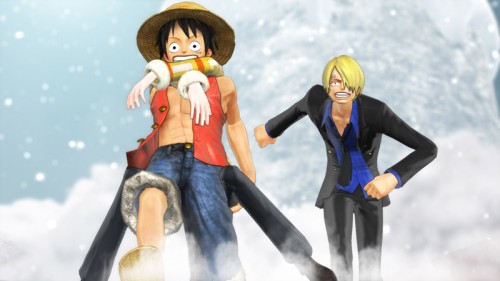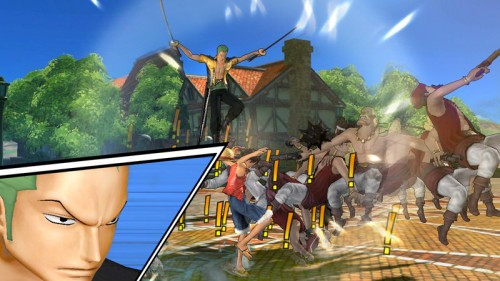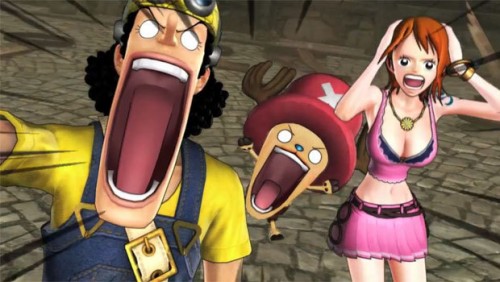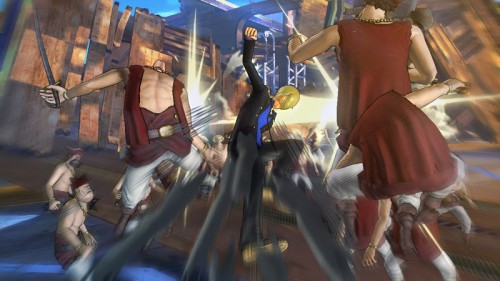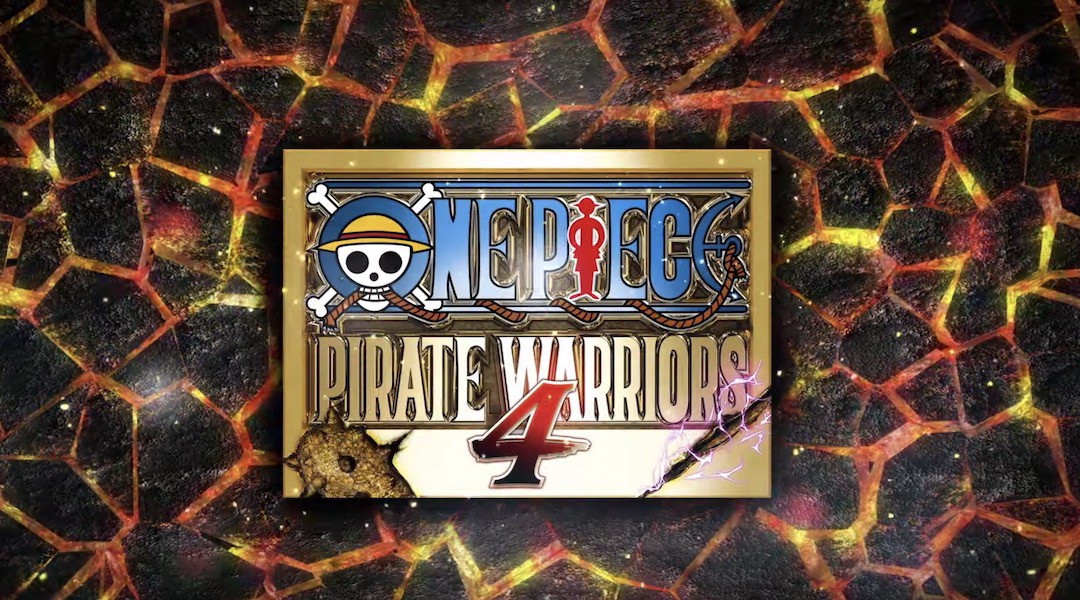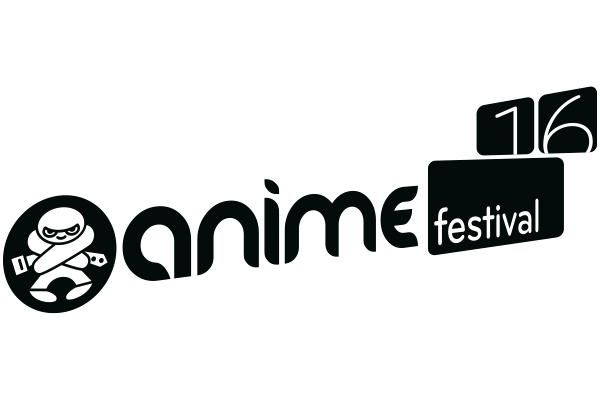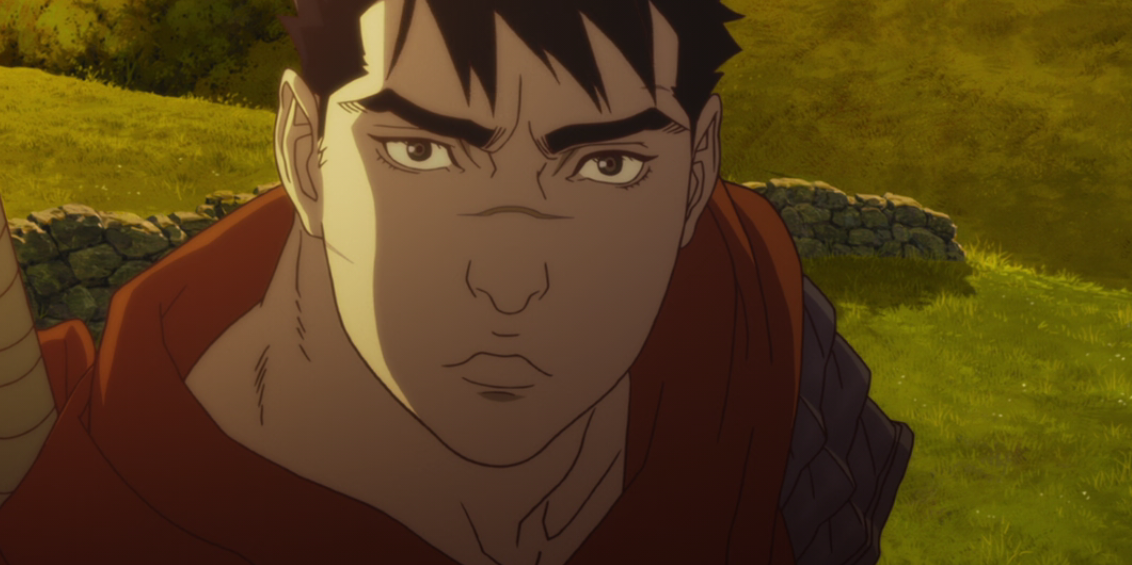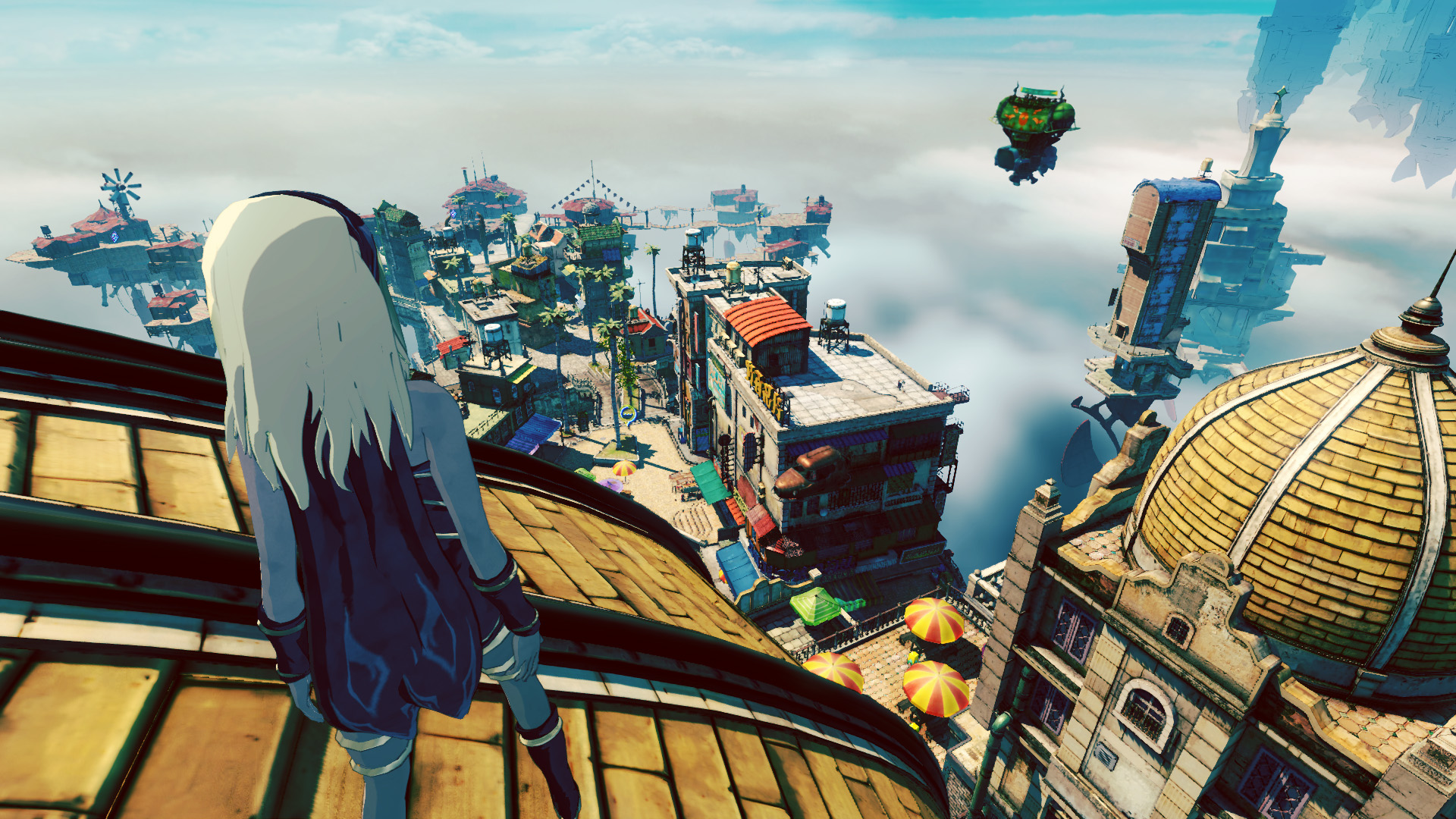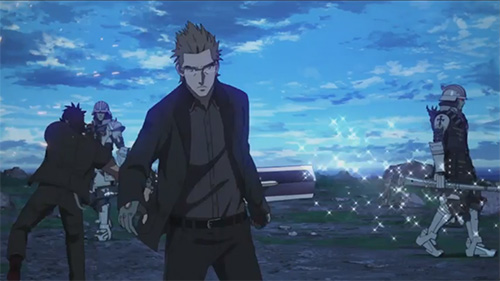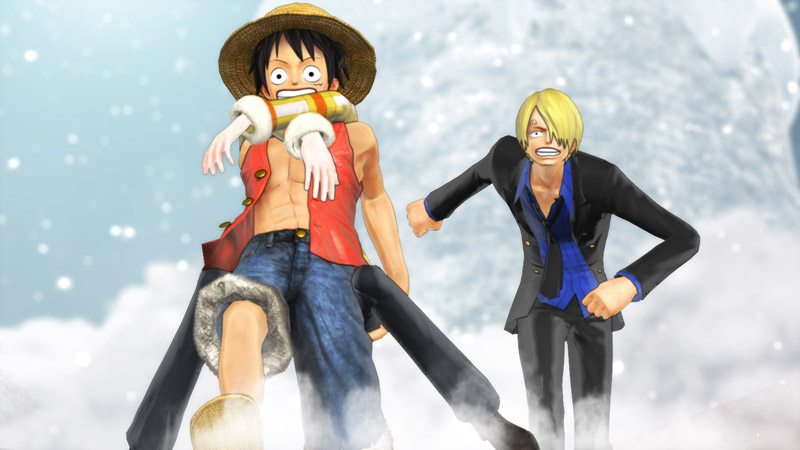
Even the most Japan-disinterested gamers will be aware of the plentiful anime tie-in software produced in The Land of the Rising Sun. Pick an anime, any anime, and you’ll almost certainly discover a role playing or action game developed to cash in on the hungry fan base. Popular as they may be, Asian markets are where these titles thrive, a significant portion never seeing the light of day here in the English speaking world.
There’s always exceptions though. Localisation of the bigger, internationally popular anime games is not uncommon, various Naruto titles being some of the more recent examples. But today I’m not talking about Naruto. Someone else can cover those games. Instead, I’m talking about One Piece, specifically the PlayStation 3 exclusive Musou brawler One Piece: Pirate Warriors.
Pirate Warriors is kind of a big deal. Not just because One Piece is a popular franchise, but because it came out of the gate pretty hard in Japan, the strong local performance encouraging demand from the West. That and the development team apparently intended to make the definitive One Piece video game, avoiding the usual tropes of cheap presentation found in so many animation tie-ins. And even though, by the end, Pirate Warriors sadly succumbs to repetition and over simplicity, it stands as one of the more faithful and content rich anime adaptations doing the rounds in our local market.
So, first things first. What is Pirate Warriors? It’s Musou One Piece, a game where you, occasionally allied with one or two companions, brawl and bash your way through hoards of opponents. Just like Dynasty Warriors, and just like Fist of the North Star: Ken’s Rage. Musou games are a Koei trademark, and when it comes toOne Piece they wouldn’t have it any other way.
On paper, this design is Pirate Warriors‘ greatest strength, simply due to how easy the game is to pick up and play. For most of the game you’ll be playing as series protagonist Luffy, occasionally taking control of companions where the story suits. Each character is equipped with their own series of moves and anime trademark abilities, chained together with a simple brawling system based on strong and weak attacks. It’s like any brawler, really, combinations of attacks resulting in special moves to sweep, launch, juggle, and knock over the numerous enemy hoards. The flexibility (pun intended, this is Luffy we’re talking about) in collision detection and simplicity of the combat system makes for some legitimately satisfying and raucous fights.
Special moves add a bit of flavour to the basic brawling. Luffy can deflect canon shots by enlarging into a balloon (a helpful counter ability), and brawling opponents fills up your typical super meeter, allowing you to unleash, you guessed it, devastating super moves. I was particularly fond of the ally chain attacks. In many stages Luffy can temporarily tether himself to companions on the map. Then, with the right combination of attacks, Luffy can summon in his ally for brief player control, unleashing a series of context sensitive moves.
Stretching (okay, no pun this time) this basic formula across the entire game, Pirate Warriors‘ battle system wears a bit thin. A superfluous upgrade system, leading to levelling up Luffy’s attack/defence based on XP, and collectable badges granting various stat bonuses, don’t really add as much to the experience as the developers probably hoped they would. It’s an illusion of skill development, where said development is so incremental and relatively pointless, that battles play out mostly the same way every time. And as simple as the brawling system is, I couldn’t help but notice a sizeable difficult spike whenever confronting bosses, which might frustrate some players.
Bringing these brawling mechanics together with interesting level design is where Pirate Warriors‘ stumbles most. The development team has done an alright job of offering diversity in design, some levels playing out like straight up brawlers, others focusing on region control, and a few gimmicky escort stages, among others, are scattered in between. Many levels also boast ‘exploring’, or at least task Luffy with finding the right path through conflict. In almost all of these cases though, Pirate Warriors simply doesn’t have the substance to keep this design interesting. I lost count of the amount of times overcoming some obstacle in an otherwise completely linear path simply amounted to backtracking a little and taking an alternative side path, one locked until I reached a scripted story sequence. And ‘exploration’, or environment navigation in general, usually hinges on a quick time event or two and…that’s about it.
In fact, Pirate Warriors‘ is really over bloated with quick time events. Swing across a gap? QTE. Scripted sequence mid boss battle? QTE. Explore desolate shipwreck? QTEs, and lots of them. QTEs are the hallmark of Pirate Warriors, so expect to do a lot of them.
I can see why they’re in there though, and it’s because Pirate Warriors is drawing directly from both the manga and anime that popularised One Piece. In creating the ‘ultimate One Piece game’ the team has stuck strictly to the source material. Hence level linearity, as it follows episodes directly from the series. Hence the QTE laden boss fights, choreographed and shot just as you might have seen in the show. And the QTE ‘exploration’? It makes the simple act of navigating the environment flashy and spectacular. Almost like you’re watching an anime…where you occasionally have to press X or square and tilt the control stick up to dodge a barrier. Exciting…
Abundance of QTEs and fairly shallow, simplistic design might sound awful, but it’s not as bad as I’m making it out to be. Or, I should say, it’s not intrusive. The QTEs work within the context of what Pirate Warriors is trying to be, and the solid, satisfying brawling works in short bursts. It’s all just a little bit dull, compared to more ambitious and fleshed out titles in the Musou genre.
Where Pirate Warriors‘ does succeed, and quite admirably, is in being exactly what it wants to be: the ultimate One Piece anime/manga adaptation. The aforementioned QTEs, as stated, aid in giving Pirate Warriors an authentic anime presentation. It helps too that the graphics are pretty impressive, using a neat sketchy cel-shader to give the impression of pencil shades on a crazy vibrant colour palette Animations too are quite good, especially the faces and eyes, which come to life during the scripted QTE sequences. Those adverse to subtitles will be disappointed to find that Pirate Warriors lacks an English dub. However, I found the subtitled Japanese dialogue, composed by the real One Piece anime cast, suited the vibe of the game perfectly.
And in terms of content, Pirate Warriors is packed. The main Log Adventure mode follows Luffy throughout anime/manga ‘episodes’, and will take a good chunk of time to finish. Once that’s done there’s Another Log, focusing on separate side stories for various characters unlocked through the game, like Nami, Zoro, Chopper, and Sanji. These stories give alternate perspectives to events that happen in Luffy’s main log, as well as their own handful of exclusive quests.
Leaderboards and multiplayer options pad the experience, but it’s the wealth of playable, authentic One Piece material here that will draw fans to the game. And really, isn’t that the whole point? This is the ultimate One Piece game, or so it’s called, and though it might not completely succeed as a work of interactive design, it certainly does so as an interactive adaptation of the manga.
One Piece fans will be looking for a game that is fun to play, a delight to watch, littered with story and characters, and faithful to the source material. And Pirate Warriors has all of this in droves. Certainly worth a good look for all One Piece fans out there, even if there’s plenty of room to improve in the whole, you know, game design part.
Lots of content | Authentic One Piece | Smooth presentation
QTEs galore | Basic, repetitive gameplay

